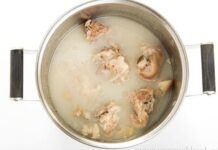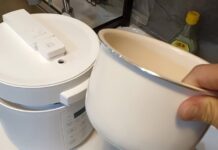The marigold plant, also known by other names such as Khong Tuoc Thao or Hoang Cuc Hoa, has the scientific name Tagetes erecta L. and belongs to the Asteraceae family. The characteristics of this plant include a herbaceous stem that is tall, ranging from 60 to 100cm, growing straight and upright.
This type of plant has branches that grow from the stem, forming a bushy shape. Its leaves are feather-like, deeply divided, long, pointed, and narrow, with serrated edges. Marigold flowers bloom at the top of the branches with a round shape, measuring about 3-4cm in diameter, standing out with yellow-orange or orange color.
The parts of the plant used include the flowers, leaves, and roots. Marigold has a bitter taste and a pleasant fragrance, with a cool and gentle nature. In Traditional Chinese Medicine, it is believed to have the ability to treat cough, phlegm, reduce inflammation, calm the mind, and detoxify the body.

Medicinal recipes and dishes from marigold
– Recipe for a soup that enhances eyesight: Use 50g of chicken liver and 20g of marigold flowers, cut into small pieces and cook together to make soup. Enjoy this dish when it is still warm to support eye health.
– Method for treating prolonged cough: Combine 10g of male papaya flowers, 20g of brown sugar, 10g of mint, and 20g of marigold flowers. Clean the ingredients, crush them, then mix them with brown sugar and steam them in water for 15 minutes. Wait for it to cool, strain the liquid, and drink it.
– Recipe for treating painful and swollen acne: Use salt combined with 15g of apple leaves and 10g of marigold. After cleaning, crush them together with salt and apply the mixture to the swollen and painful area. When using, it is necessary to replace the medicine regularly and maintain it for the required period of time to see the effect, while ensuring hygiene to avoid infection.
– Treatment for breast inflammation: Use 30g of honeysuckle leaves, 30g of Dicranopteris linearis, and 30g of marigold flowers, crush them and apply them to the affected area.

– Method for relieving toothache: Apply marigold powder directly to the painful area of the tooth and repeat several times a day.
– Treatment for constipation: Crush 20g of marigold flowers and mix with an appropriate amount of sugar to reduce bitterness, then steam and drink the herbal water.
– Support for asthma treatment: Combine 20g of marigold with 10g each of other herbs, brew and drink daily.
– Treatment for inflammation of the ear canal: Grind 15g of marigold flowers to make a paste, mix with vinegar, and apply it to the affected area.
– Method for relieving eye pain: Use 20g of fresh marigold flowers and 30g of fresh strawberry leaves, boil them with 300ml of water, and steam the vapor into the eyes continuously for 3-5 days.
Before applying the above recipes, you should consult with a specialist to ensure safety and effectiveness.

Precautions when using marigold
– People with allergies to marigold should avoid using it.
– Not suitable for women during pregnancy.
– It is important to choose ingredients from reliable sources, ensure hygiene, and be able to distinguish marigold from other types of daisies to ensure the effectiveness of treatment.







































